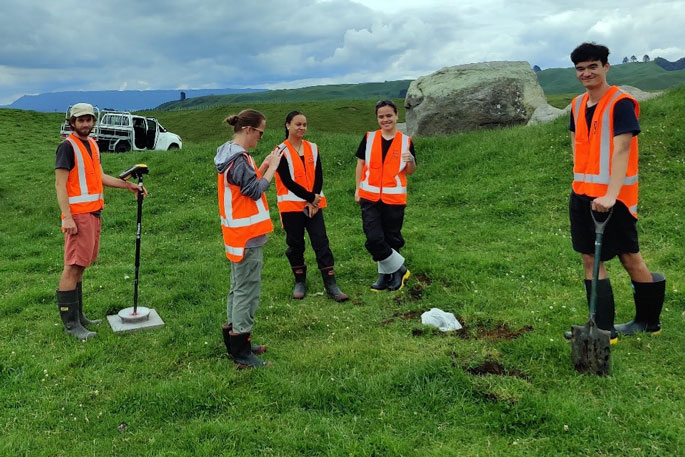Scientist are listening to the “hum of the Earth” with cutting-edge, low-cost devices to determine the seismic hazard of the Paeroa Fault.
The GNS research team installed 147 small seismometers in a targeted area south of Rotorua and used the earth’s natural rumbles to determine how steeply the seismic fault dives under its surface.
“If we know how deep the fault goes and on what angle, we can determine how big an area may rupture and what magnitude earthquakes it may trigger,” says geophysicist and project lead Dr Brook Keats, who explains that the instruments will detect small soundwaves to assess the structure of the fault.
“We listened to the hum of Earth, including the sounds of the waves crashing into the Bay of Plenty coast, just over 50km away, and measured the seismic velocity, or how fast the sound travels to different locations and at different depths,” says the GNS scientist.
Keats explains that his project was one of the first in New Zealand to use the lunchbox-sized instruments that are not as sophisticated as the full-scale seismometers used by the GeoNet network but are cheap and easy to install – perfect for targeted studies like this one.
“So, in this case we went for quantity over quality and because we were able to install so many very quickly, we were able to overcome the quality issue by collecting so much data in just a month.”
NHC’s Head of Research, Dr Natalie Balfour, says the organisation invests in research that helps New Zealanders better understand and prepare for natural hazards.
Keats says the team worked closely with local iwi Ngāti Tahu - Ngāti Whaoa and incorporated two local students as field assistants.



0 comments
Leave a Comment
You must be logged in to make a comment.